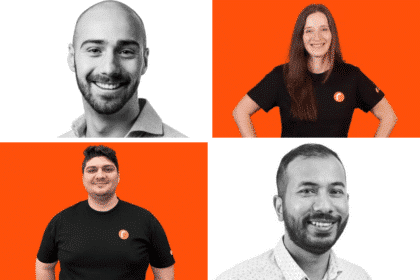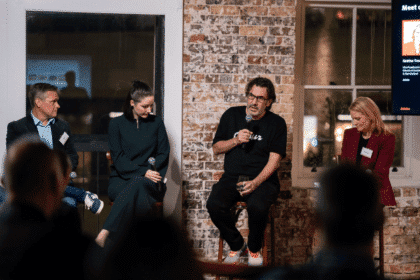As B&T gears up for the 2025 Women Leading Tech Awards, presented by Atlassian in March 2025, Jeannette Laidlaw, former lawyer and current vice president of global customer experience at SafetyCulture, highlights the amazing work being done by women in tech and her personal journey in the industry.
The Women Leading Tech Awards exist to champion excellence and drive change in an industry where gender diversity remains a challenge. While progress is being made, these awards play a crucial role in elevating role models, fostering inclusivity, and advocating for a future where recognising women in tech is the norm—not the exception.
Voting is open for the Women Leading Tech Awards, presented by Atlassian People’s Choice Award now!
Don’t forget to secure your tickets!
B&T: How seamless was your transition from law to tech? What lessons from law have you brought over to the world of tech?
Jeannette Laidlaw: “Non-linear” best describes my career journey.
I started as an M&A lawyer in New York and have also had the opportunity to integrate lots of acquisitions. What’s unique about M&A is that it’s all about change. You’re solving the challenge of bringing together different people, cultures and businesses – something I’ve always thrived on.
After legal roles in various industries as diverse as music and fashion, I ventured into tech. By definition, tech is always evolving and continually brings opportunities to work through the challenges of change.
It was during my time at Intuit in California that I made my most significant career pivot, transitioning from an in-house legal role to corporate development, and then later into operational roles at one of Intuit’s acquisitions.
My advice for women looking to make a career transition is that it’s a lot easier to make this move in the context of a company and team that you already know. Often people looking for a career change will jump ship in search of their next opportunity. However, exploring internal mobility can often be a better option and offers the advantages of sustaining the relationships you’ve already built, the personal brand you’ve created, and knowledge of the business.
Jobs are like a pair of jeans: you need to figure out what fits. Sometimes you find that perfect fit the first time, they may work really well for a while and you might need to adjust or change them over time.
B&T: How has the tech landscape for women changed (or not) since the Dot Com boom?
JL: When I started as a lawyer in New York, wearing pantsuits rather than skirts was considered a bold move. Fast-forward and I now wear jeans and sneakers to work every day (with the option of bringing my sheepadoodle sidekick).
That’s a trivial example as there’s been a huge amount of progress for women in the industry and corporate world more broadly. But it still falls short. You just need to look at the number – or lack thereof – of women in senior executive or C-suite roles in tech. Women founders also face a really tough battle to access growth capital after the initial funding lifecycle, which is another obstacle.
Until we see parity – in opportunity, representation, remuneration, funding – the job isn’t done.
That said, there’s also been a big change in the role that the tech sector plays in Australia, including the number of successful homegrown startups and scaleups. It’s now possible to perform a global tech role from Australia – like I do at SafetyCulture – which would have been a pipe dream 15 or 20 years ago.
Technology has also enabled the creation of more hybrid, flexible and remote job roles, which we’ve embraced at SafetyCulture. These roles present benefits for women who are primary caregivers or require greater flexibility.
B&T: What are the opportunities for skills training and economic equality (e.g. pay equity) for women in this industry?
JL: Businesses need to address many factors to create equitable opportunities for women in tech, such as closing the gender pay gap, boosting parental leave policies for both caregivers, building bridges for women after career breaks, and continuing to enable hybrid roles.
But some of the issues are much bigger than corporate policies. They are often the result of deeply ingrained societal norms, such as attitudes to unpaid work and caring responsibilities that put the burden on women or systemic economic factors like the gender superannuation gap.
Businesses need to buy into the important role they play, but it would be short-sighted to think they can solve this alone.
B&T: From your experience working globally in tech roles over the years, how do you think positive changes can be made in the industry?
JL: It’s proven that more inclusive workplaces drive better outcomes for employees, customer innovation, and business performance. The key is making sure that our efforts to build diverse and inclusive workplaces are effective and sustainable over the long term, and to do that requires ongoing reflection, feedback and optimisation. Businesses need to approach it like they would a product – test and then iterate until you get it right.
In my career, I’ve seen that a culture of belonging is built when all employees feel heard and valued. Creating space for open conversations—where different perspectives can be shared constructively—is an important step in making lasting progress.
B&T: What advice do you have for women entering the tech industry today?
JL: It’s a long game – there’s no need to rush it.
There may be times when you need to adjust your career to accommodate other parts of your life.
Find other women who have more or different experiences and learn from them.
Work out what you value in a role. Purpose-driven was important for me when I found my SafetyCulture role, for others it might be flexibility or internal mobility. It’s back to finding that right-fit pair of jeans.
Ask for help, share your knowledge, and support others professionally and personally. The power of a mother’s WhatsApp group can never be underestimated.









